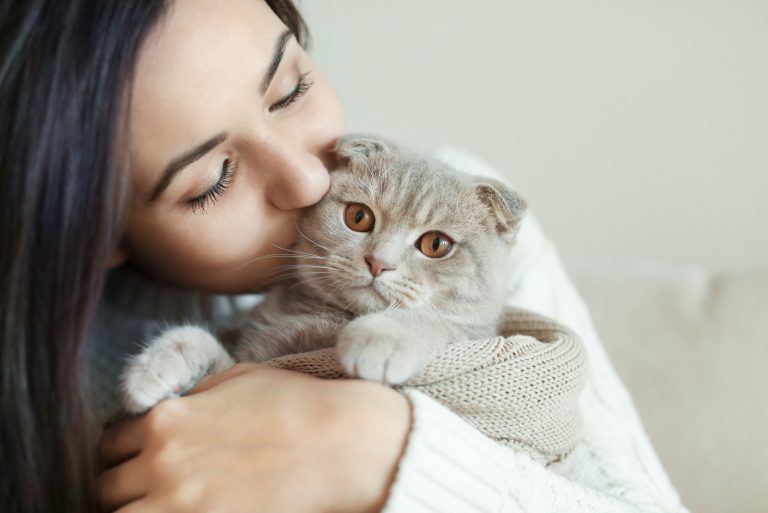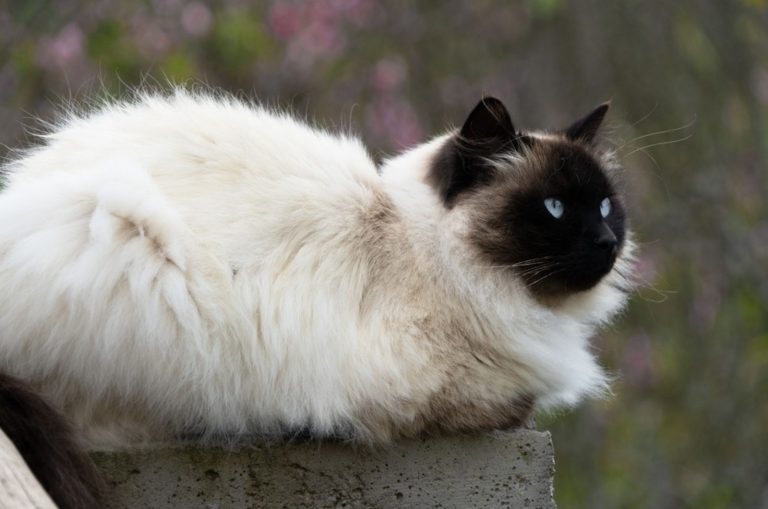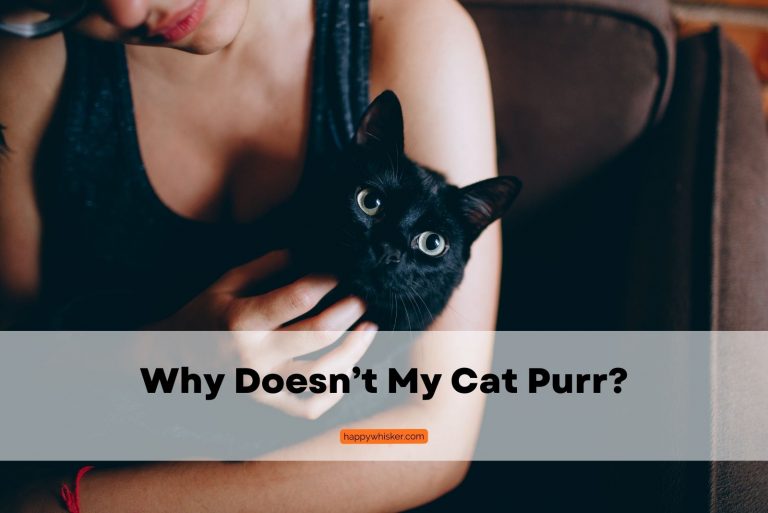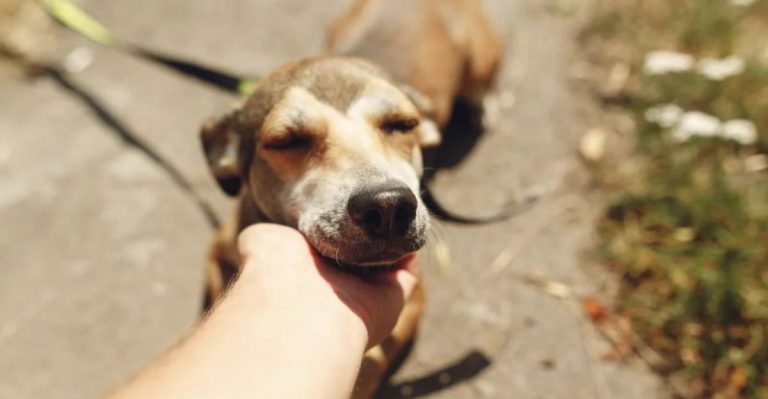My Cat Keeps Throwing Up But Seems Fine – Should I Worry?
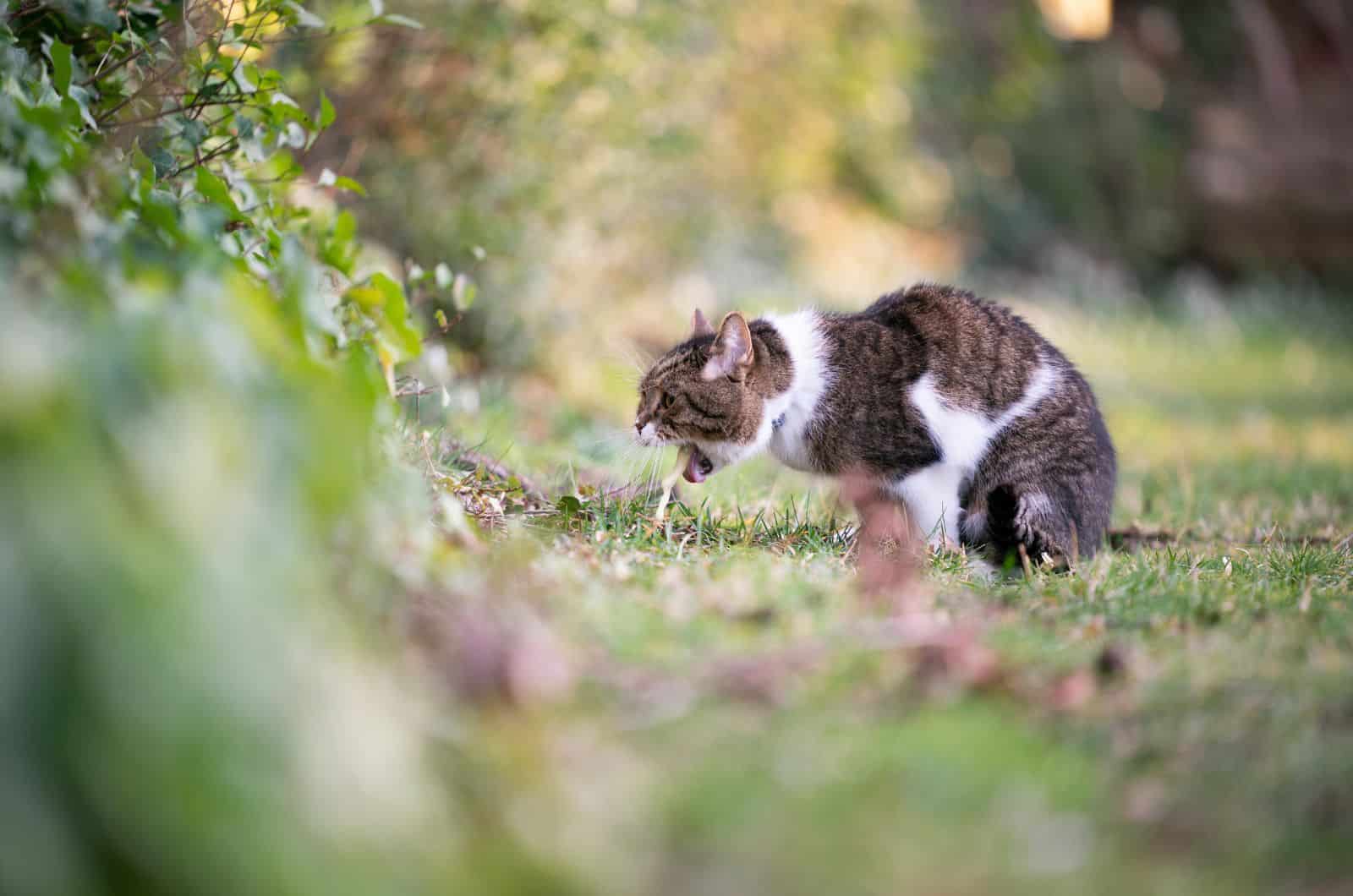
Vomiting is a common symptom when either you or your pet get sick. Normally, it’s accompanied with other symptoms that point to certain specific health issues.
But what if my cat keeps throwing up but seems fine? Should I worry, or is it nothing serious?
If you notice your cat throwing up food, hair, or just saliva, yet acting normal, that may not be very serious,but it still requires your attention.
When vomiting is accompanied by other symptoms, then this requires an immediate vet-check as it may be a sign of serious health conditions that need to be treated right away.
Therefore, if you want to know what are the reasons why your feline vomits but acts normally, and when you should take things seriously and take her to the vet, then read on and find out as it may be useful for every pet parent.
12 Common Reasons Why My Cat Keeps Throwing Up But Seems Fine
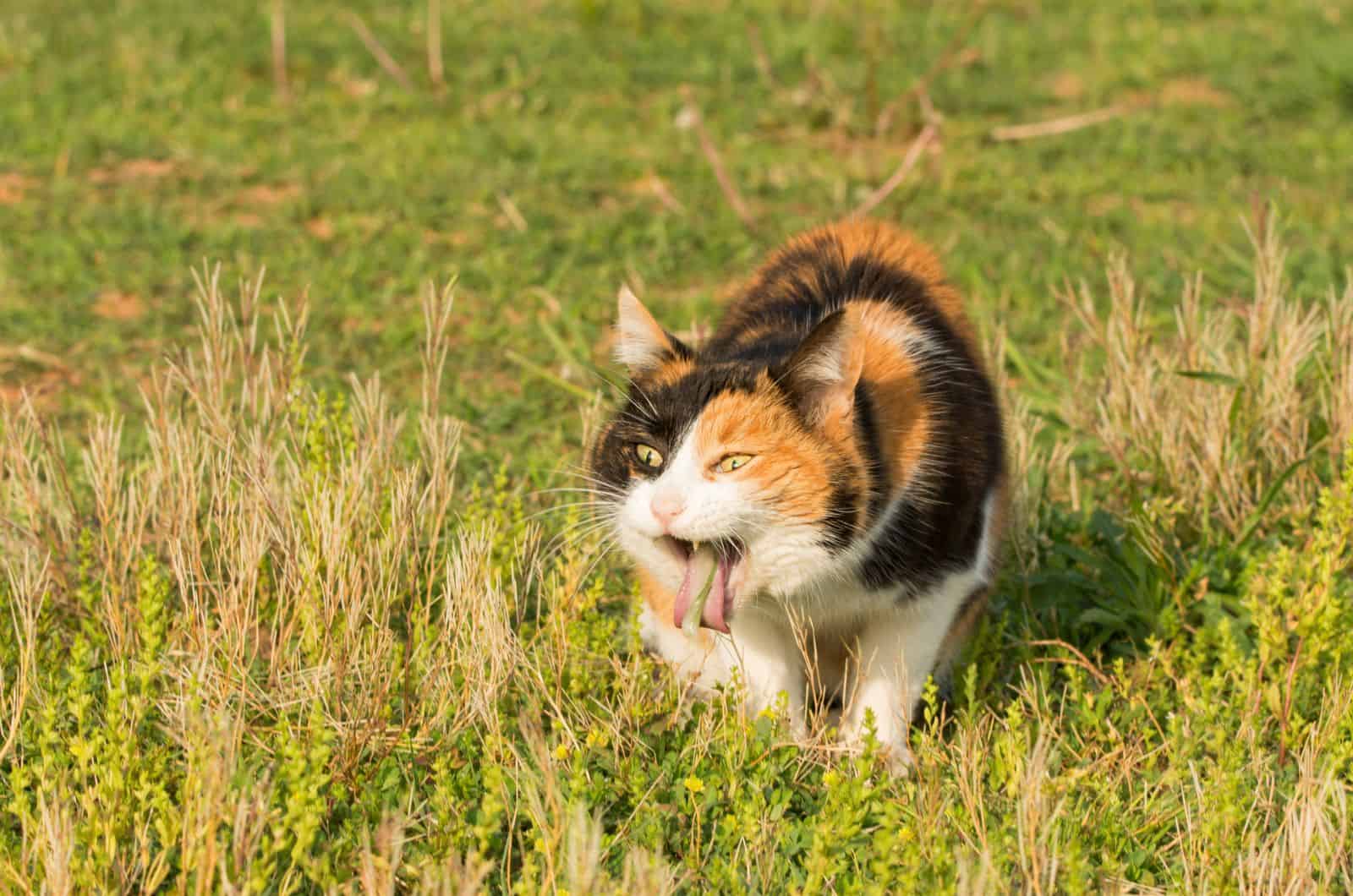
As previously mentioned, a cat throwing up may indicate mild illness or serious health conditions. Many pet owners have approached their vet saying my cat keeps throwing up but seems fine, and it’s usually a consequence of less serious underlying causes.
However, if vomiting is accompanied by other symptoms, there may be a more serious health issue that requires professional help.
However, whether it’s a more or less serious issue, a cat who vomits needs your full attention and help; we all want our feline friend to be happy and healthy.
So, read on as I provide 12 reasons that I have discovered that explain why my cat is throwing up but acting normally.
Reason No1 – Hairballs
If your cat keeps throwing up but seems fine, the most common cause is hairballs. If you notice your feline friend throwing up hair, you shouldn’t be worried; this is a natural thing for a cat.
The production of hairballs is a normal part of a cat’s hygiene. They groom themselves, and in doing so, they ingest huge amounts of hair. That leads to the formation of hairballs in a cat’s stomach, which they eventually throw up.
Hairballs are very hard for cats to digest, so if you don’t notice hairballs in their poop while cleaning their litter box, that means that they will probably vomit them up soon.
Keep in mind that regurgitation of hairballs won’t always look like actual balls of hair, because they need to travel through the esophagus in order to be expelled. Usually, hairballs are mixed with food and so they may not always be easily identified.
You should know that there’s a similar condition called hair gastritis which can be quite serious. This refers to a condition where cat’s hair that has been ingested starts causing inflammation of the cat’s stomach, which leads to vomiting.
Hair gastritis is usually followed by other symptoms, such as diarrhea, gaging, retching, constipation, loss of appetite, and similar. Make sure that you differentiate between these two things, so that you can respond appropriately.
Even though the vomiting of hairballs is a normal thing for every cat, there are a few things that can help you in reducing the amount of hairballs and thus improving your cat’s quality of life.
This is especially important for long-haired cats as they may have more issues with hairballs than short-haired felines, but we’ll get to this later on in the article.
Reason No2 – Overeating
Cats can overdo it when it comes to food, especially if you don’t have a proper feeding schedule. Overeating may be the reason for your cat throwing up if it seems fine otherwise.
If you’re a cat parent, you should create a proper feeding schedule that is appropriate for your cat’s age.
In order to keep your feline fit and prevent her from overeating, you should give her smaller portions of food several times a day, again it depends on the cat’s age.
This may be a bit more difficult to control in a multi-cat household. If one cat doesn’t eat all of its food, another may come and finish the meal. Also, some cats may aggressively repel another cat and eat its food.
If you’re dealing with this issue, you need to find a way to properly control this behavior, or try feeding your cats in separate rooms.
Reason No3 – Eating Too Fast
Eating too fast may be another reason for throwing up but being completely fine afterwards. This is the same for both humans and cats, especially when it’s your favorite food and you just can’t control yourself…!
When a cat is eating too fast, there’s no time to process the food, and so it throws up. This is called regurgitation.
This behavior is more common in multi-cat households, mostly because they’re afraid that another cat will eat their food.
If you have more than one pet cat in your home with this issue, the best thing is to try feeding them in separate, peaceful rooms where they’re safe from one another.
In addition to that, eating too fast is also common for extremely hungry or starved cats, therefore you need to be very careful if feeding a malnourished feline.
Starving cats shouldn’t be given huge amounts of food all of a sudden because it may lead to them eating too fast and then throwing up.
It is better to give a starving cat small portions of food, several times a day, and ensure they feel safe while eating by placing them in a small room, far away from anything that might make them feel stressed.
Reason No4 – Bad Diet
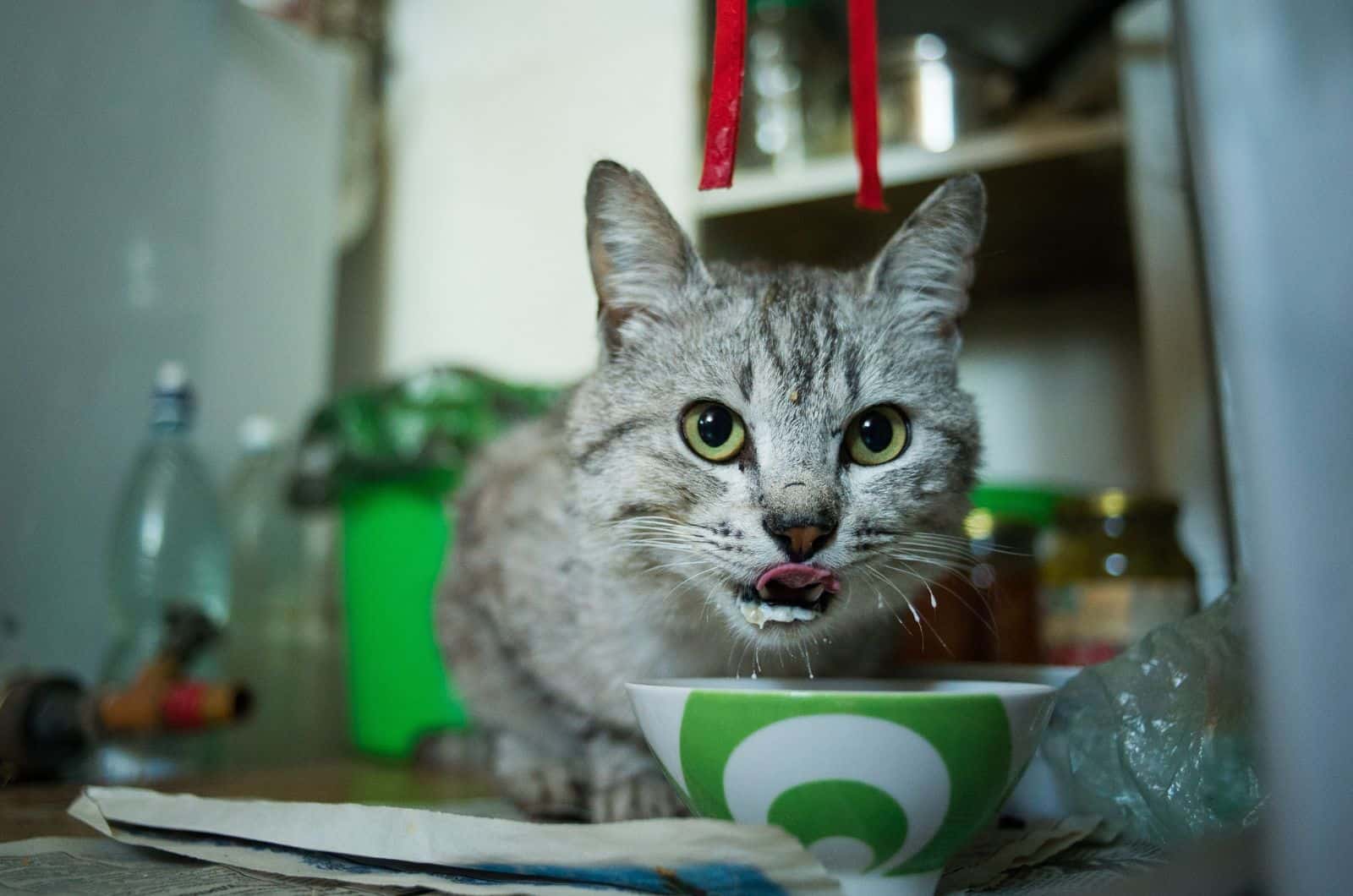
If you want your feline to be healthy, then she needs a healthy diet. Cats are obligate carnivores by nature and that means that their diet should be based on real meat, animal protein, and other nutrients that are important for health.
It is always best to feed your feline high-quality cat food. A lot of cat foods contain artificial ingredients, or high levels of carbohydrates. High-quality food is the best choice because it’s the healthiest for your kitty friend.
You should also consider your cat’s age when choosing the best cat food. For example, if you have a kitten, then you should provide it with kitten food as this is formulated to meet their nutritional needs and strengthen their young immune systems, as well as being easier for them to chew.
It is generally best to combine dry and wet food as this will help keep a cat’s diet balanced. Wet food will provide cats with the necessary nutrients and keep them hydrated, while dry food will help with their dental health.
If you choose not to follow these instructions when it comes to your feline’s diet, then a poor diet may be the main reason why your cat keeps throwing up.
That may be especially common in cats who eat human food or consume dairy products. Most human food is a big NO for our cat friends as it’s not suitable for their digestive system.
Even though some cats may like milk and other dairy products, it can cause vomiting, diarrhea, and similar digestion issues because most cats are lactose intolerant.
So, if you think that your cat’s diet might be what makes your cat vomit, then it’s time for a new feeding schedule that will suit your cat and help improve her health.
Reason No5 – Food Allergies
Just as humans may suffer from allergies, cats may also have allergies.
It is important for you to know that cats may not be allergic to a certain food from the moment they’re born; these allergies may develop at any stage of cat’s life.
Food allergies in cats are usually very easy to notice, as there are other accompanying symptoms besides frequent vomiting, such as:
• Itching
• Loss of appetite
• Weight loss
• Hair loss on ears and other body parts
• Respiratory issues
If you suspect that your feline is suffering from food allergies, you should take her to the vet to test her for sensitivity and based on the results, they’ll know what type of food is causing the allergy and how to treat it.
Reason No6 – Toxic Food
Most food or drinks intended for humans can be highly toxic for felines. Therefore, if they ingest some of these toxic ingredients, it may lead to vomiting.
Some of the most common toxic things for felines include garlic, onion, alcohol, chocolate, coffee, as well as many houseplants.
Vomiting may be accompanied by other symptoms such as excessive thirst, coughing, tremors, seizures, lethargy, and weakness.
If you notice or even just suspect that your cat has ingested something toxic, contact your vet immediately so they can start treating the problem as soon as possible.
You should keep things that are toxic for cats out of their reach, so that you can avoid these dangerous situations.
Reason No7 – Pancreatitis
If you are still asking why your cat keeps throwing up but seems fine, the reason may be pancreatitis.
This condition is caused by inflammation of the pancreas. The pancreas is an organ that produces certain hormones as well as digestive enzymes.
If a cat cannot process food properly due to pancreas inflammation, the cat may vomit up the food instead.
However, in some other cases, cats don’t eat much but act normal.
If you notice other symptoms besides vomiting, such as fever, extreme loss of appetite, pain, diarrhea, weakness, and lethargy, then it may be pancreatitis that is causing the problem so you should take your cat to the vet right away.
Reason No8 – New Cat Food

Almost every cat parent is familiar with the fact that cats are creatures of routine, which means that they don’t really like changes. Big changes can impact their lives very much.
If you introduce new food to your feline friend, this may result in vomiting and then continuing to act normally.
The reason for vomiting, in this case, may be a certain ingredient that is too harsh for a cat’s sensitive stomach.
If your cat refuses to eat the new food and wants the old one, then try gradually introducing the change by slowly transitioning from the old to the new food.
To do this, give your feline her old cat food, but add a little bit of the new food into the bowl. Each day, increase the amount of new food and continue doing it until the new food fully replaces the old one.
I guarantee that you’ll succeed, and it’ll be 1 for you, 0 for your cat!
Reason No9 – Undigested Food
If a cat has difficulty digesting certain food, there is nowhere else for the food to go and eventually it is vomited up.
Cats should digest their food in a certain period of time, and it usually happens after 10-20 hours.
However, if your feline doesn’t poop in that period or after 36 hours, it usually means that she has some digestive issues that require professional help. Therefore, a cat will often vomit up the undigested food that it cannot process properly.
Reason No10 – Human Food
As previously mentioned, human food may also be one of the main culprits for cats vomiting. Most human food is very unhealthy, especially salty, spicy, and sweet food.
It’s very bad for cats because their digestive system isn’t able to digest these types of food.
It’s the same with human drinks. Cats should drink only water and nothing else; other drinks may cause them serious problems. Milk and other dairy products should never be given to cats as most cats are lactose intolerant.
If you are caring for an orphaned kitten, avoid using cow’s milk, but instead give it kitten milk replacement formula.
Still, there are some human foods that are safe for cats as long as they are only given in moderation.
If you cannot resist your cat begging for a taste of your delicious food, make sure that you only give her a tiny piece of it – but only rarely as a reward or treat, and of course, only if it’s safe food for the cat.
Reason No11 – Ingesting Foreign Objects
We have all heard the phrase, “curiosity killed the cat”, and for good reason! Cats are very curious animals, and believe it or not, that may be the reason why your cat throws up but seems fine soon afterwards.
So, how are these two things connected? Well, as cats are highly curious, it can happen that while they are exploring some foreign body, they (on purpose or accidentally) ingest it. This may lead to a range of complications.
Sometimes, cats may ingest smaller things that manage to make it through the digestive tract and eventually into the litter box, but it’s not impossible for cats to ingest some larger foreign objects and that usually leads to more serious problems.
In most cases, if a cat can’t digest something properly, it will simply throw it up. However, if you notice that your feline is struggling with vomiting, this is a red flag and you should rush to the veterinary clinic for help.
These occurrences cannot always be avoided completely, but there are a few things that you can do to make your environment safer for your feline friend.
For example, secure the room where your cat spends most of the time, and make it cat-friendly. Provide lots of interesting cat toys so that they will hopefully ignore other household objects.
Reason No12 – Worms
If your feline is infected with worms or other parasites, it can be a serious issue, especially if not treated on time.
In order to avoid this, it’s important that you deworm your feline regularly. If you don’t, your cat may experience symptoms such as vomiting, diarrhea, loss of appetite, weight loss, pain, and similar.
If your cat is heavily infected with worms, you may notice worms in their feces, or even in their vomit, which means that you need to go to the vet immediately so that your feline can be treated properly.
The deworming process will require special attention because it takes time for the worms to actually be gone.
In addition to that, if your indoor cat is infected with parasites, it’s highly important to clean the entire house in order to reduce the risk of your kitty getting reinfected with worms again.
If you want to avoid medications, you can also try using some homemade things for deworming as they have been useful for some cat owners.
Cause Of Vomiting In Cats – When To Worry?
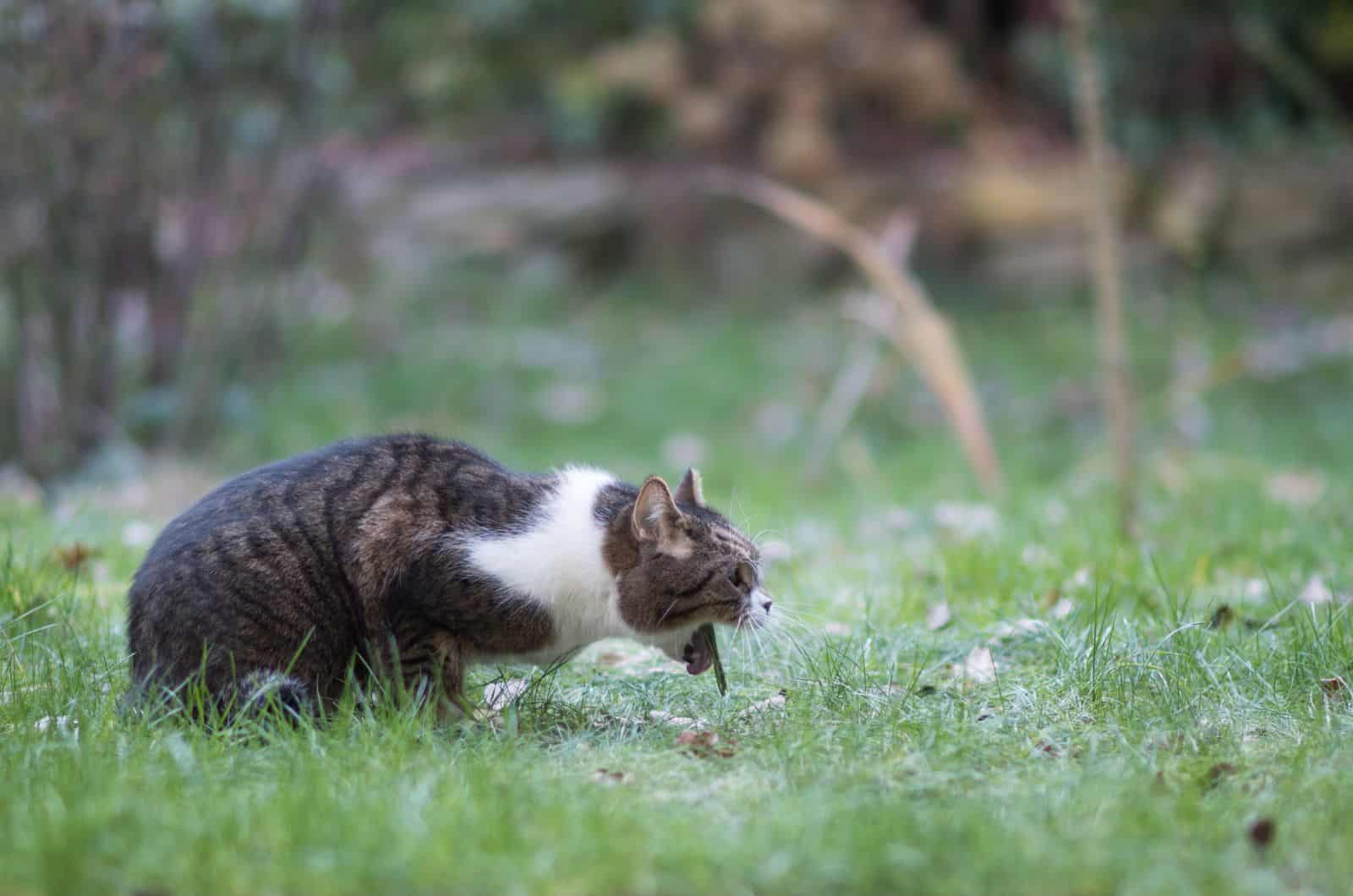
Besides these less serious cases of vomiting in cats, there are other more serious health conditions that can cause chronic vomiting, as well as other symptoms.
Usually, these conditions require an immediate vet care, as some of them may also be life-threatening, especially if you don’t react on time.
I know it’s easy to say “don’t worry” when these things happen, but really, don’t worry! Read on so that you know what other serious conditions may cause vomiting in cats and how to recognize them. Knowing what to look out for means you can treat it much more quickly and effectively.
Other Serious Conditions That Cause Cat Vomiting
Check out the following health problems that may also cause an upset stomach and lead to vomiting in cats as well as other symptoms:
Hyperthyroidism
Hyperthyroidism is a condition in which the thyroid gland starts to overproduce the thyroxine hormone.
Sometimes, it may be hard to recognize this condition as it shares a lot of symptoms with other health issues.
However, some of the main symptoms to look out for are vomiting, tachycardia, weight loss, anxiety, excessive thirst, diarrhea, inappropriate urination, and similar.
It’s crucial to recognize these symptoms quickly so you can discover what’s wrong with your feline and start with the right treatment as soon as possible. If the condition is discovered and acted on in good time, the cat may completely recover and the condition can be managed using medication.
Gastrointestinal Issues
Gastrointestinal issues may be caused by many things including stress, different food, blockages, hairballs, infections, intestinal obstruction, and even cancer.
A condition may develop suddenly or gradually, and it’s usually accompanied by symptoms like vomiting, constipation, loss of appetite, fever, pain, behavior changes, weight loss, diarrhea, and similar.
If you notice these symptoms, it’s important to contact your vet and take your cat for a check-up.
The vet will run some tests such as bloodwork, x-rays, fecal and urine analysis, ultrasound, sensitivity testing, and other procedures such as biopsies and surgeries if necessary.
Based on the results of their investigations, the vet will be able to implement proper treatment for your cat’s specific problem.
Kidney Disease
This condition involves serious dysfunction in the cat’s kidneys. This is a very serious condition because kidneys are important for a cat’s health as they filter the blood and produce urine.
The main symptoms of kidney disease in cats include vomiting, weight loss, lethargy, weakness, hypertension, inappropriate urination and excessive thirst.
As soon as you notice changes in your cat’s behavior, take it to the vet for a thorough check-up. The vet will start by running some blood tests, urinalysis, x-rays, ultrasound scans, and other examinations in order to diagnose kidney disease.
Unfortunately, there’s no 100% effective cure for kidney disease. However, vets can usually prescribe treatments that help to prolong and improve the cat’s life.
Liver Disease
There are many different issues that can arise concerning a cat’s liver, but usually, most of them share similar symptoms, such as vomiting, loss of appetite, weight loss, weakness and lethargy, diarrhea, and behavior changes.
Sometimes, it may be confusing because so many of these conditions have the same symptoms.
However, that’s why it’s essential to take your cat for a trip to the vet. The vet will run some tests to find out what’s wrong with your beloved feline and begin the best treatment as soon as possible.
Most cats manage to recover, but it may be a long journey. On the other hand, this and similar conditions may also be fatal for felines, especially older cats who are weaker and therefore unable to fight the disease.
Inflammatory Bowel Disease
This condition occurs when a cat’s gastrointestinal tract is irritated and inflamed.
The condition develops when inflammatory cells start to grow and thicken the walls of the gastrointestinal tract, leading to the cat being able to digest food properly. This condition is common for cats of all ages, but especially in older cats.
The most common signs of this condition include vomiting, diarrhea, loss of appetite, weight loss, lethargy and weakness, and blood in the stool.
As far as diagnosis and treatment is concerned, the vet will first run some tests and then provide the feline with proper treatment according to their diagnosis.
Underlying Causes Based On Puke Colors
What if my cat keeps throwing up but seems fine, what to do then?
I’m here to help you with that too. First of all, whatever happens, there’s no point in panicking. Stay calm and monitor your cat’s health so that you can react in a timely manner.
If the only obvious symptom is vomiting, you can try to identify underlying causes based on the color of the cat’s puke.
Different colors may indicate if it’s something bad or not, so check out the possible meanings of the following puke colors:
• Black puke – if your feline’s vomit is black in color, this is a serious red flag, as it could be blood from the cat’s stomach ulcer, which will require immediate help.
• Pink puke – if you notice your cat’s puke is pink in color, it may be due to a certain food that the cat ate. However, if you’re not sure that it has been caused by food, then contact your vet in case the vomit is pink because of blood traces.
• Green or yellow puke – this usually indicates inappropriate digested food, or digested plant material. All in all, it’s usually nothing serious, but quite a normal thing for felines.
• Red puke – just like black puke, red-colored is also alarming because it usually means blood, and so you will need to call your vet right away.
• Foamy or clear puke – if you notice a foamy or clear vomit, there’s usually nothing to worry about as in most cases it is only acid that forms on an empty stomach, or ingested water.
When Is It Time For A Vet Visit?
Potential causes for vomiting may range in severity. If your cat throws up rarely, then you should check out the reasons mentioned at the beginning of the article.
However, if your feline friend throws up multiple times a day, then we’re talking about chronic vomiting that requires special attention and a vet-check, especially if vomiting is accompanied by other symptoms.
How To Care For Your Cat After Vomiting?
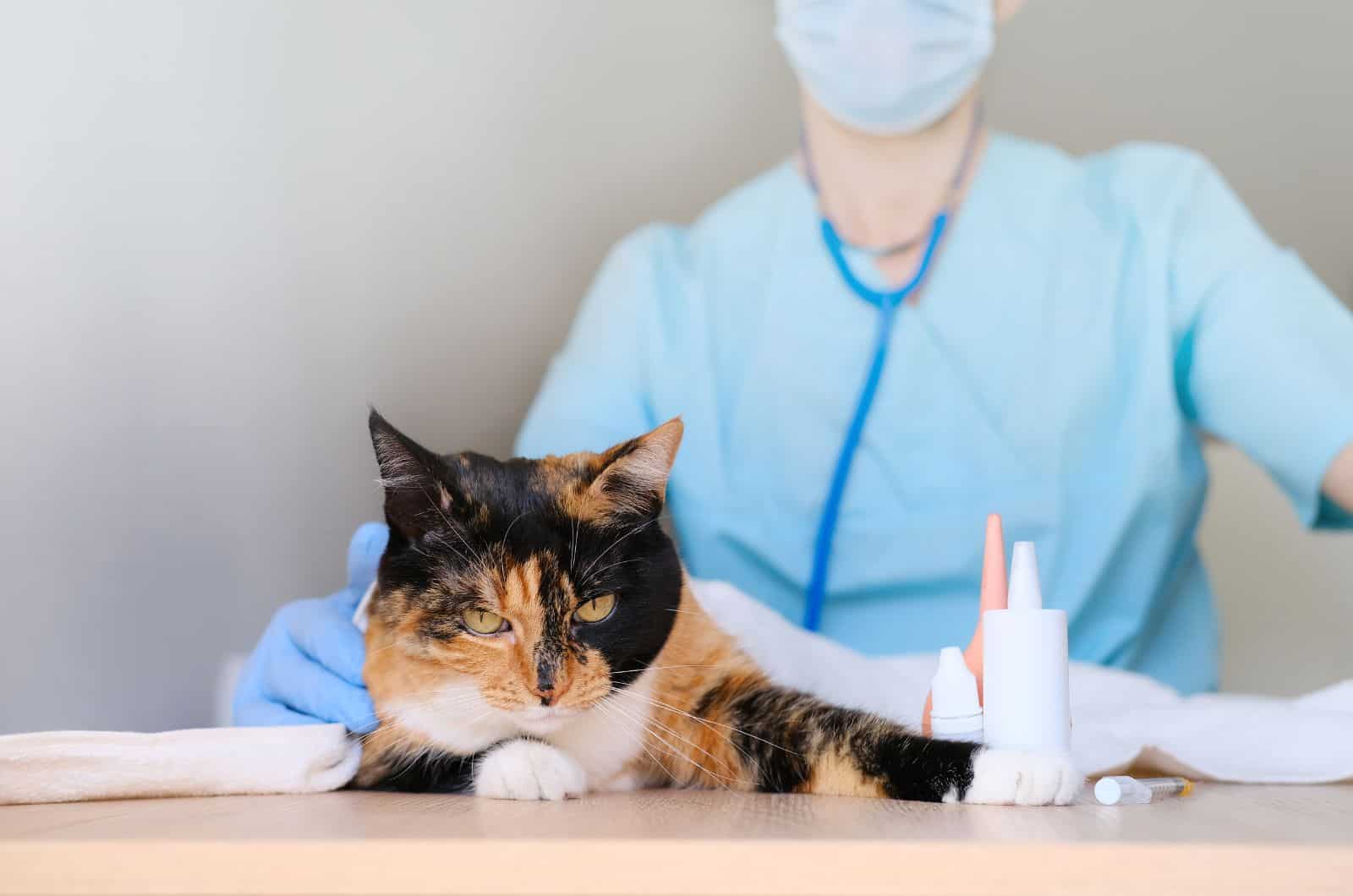
If you notice your feline friend throwing up frequently, here are some things you can do to help your furry friend, because every pet’s health matters!
Vet-Check First!
First things first; if you notice frequent or chronic vomiting in your cat then you should contact your vet and take your cat for a check-up.
Most cat owners only take their felines to the vet when other symptoms appear, but you can take your feline preventively. It’s very important to discover health issues in the early stages.
A Special Cat Diet Is Obligatory!
If your kitty has problems with different foods, or has other gastrointestinal problems, you need to create a proper feeding schedule and implement a special diet.
Your feline should be given cat food that contains a balanced amount of animal protein, carbohydrates, and fats.
If your feline has food allergies, then I recommend that you take your feline for a check-up so that the vet can discover what is causing the allergy. When you finally find out the trigger, avoid using that food in your cat’s diet.
Always feed your kitten with kitten food, or if you have an older cat who vomits, there’s a special senior food for them too.
If you’re not sure how to put up a diet plan, you can always ask your vet for advice and to help you with that.
Use Slow Feeder Bowls!
As previously mentioned, one of the possible reasons why your cat keeps throwing up but seems fine otherwise is that your cat eats too fast. Don’t worry; there is a solution for almost everything!
Thes best solution for this problem is a special bowl for cats that eat too fast. The slow feeder bowl has obstacles that don’t allow your feline to eat their meal in one bite!
This type of bowl also keeps your cat mentally active while eating as they need to work out how to access the food.
Remember, if you live in a mult-cat household, try separating your cats into different rooms while they eat, in order to discourage fast eating.
Decrease The Hairballs!
As we already know, hairballs are a completely normal part of cats’ lives.
However, some cats produce hairballs more frequently than others. You can help your furry friend to reduce their hairballs, and make life easier for both of you.
In order to help your cat with this, you should brush them frequently to reduce the loose hair and stop your cat from swallowing it. A frequent bath would be helpful as well.
Besides that, there are a lot of different products that have been designed to help with hairballs such as hairball gels, dry food with hairball formula, oils and similar. These may also be a good thing to try; they were quite helpful with my cats!
FAQ
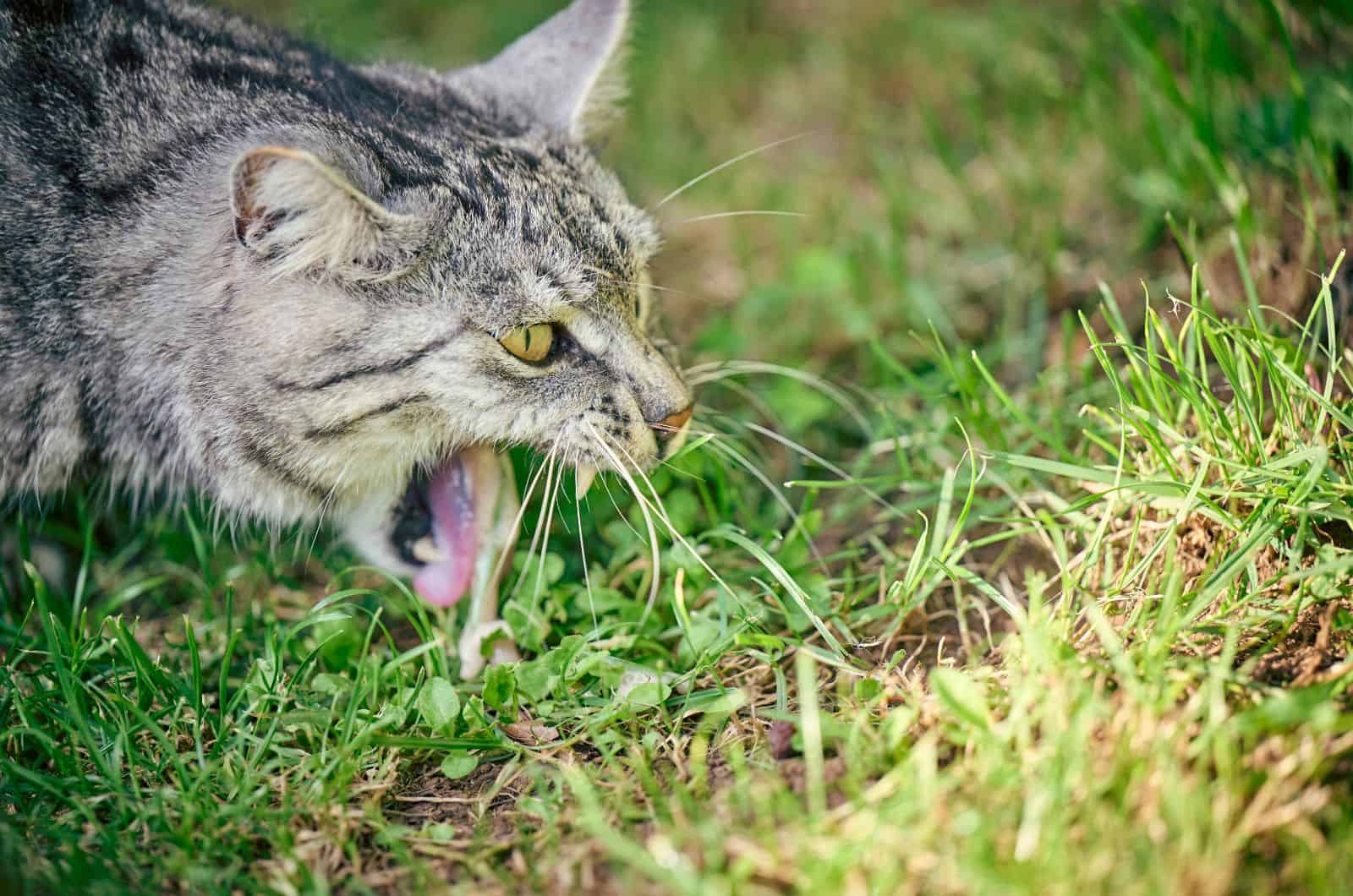
Why Does My Indoor Cat Keep Throwing Up?
If your indoor cat keeps throwing up but seems otherwise fine, the most likely cause is hairballs. Vomiting up hairballs is a common thing, and a normal part of a cat’s hygiene.
However, other reasons for your indoor cat vomiting may be eating human food, ingesting foregin objects, food allergies, overeating, eating too fast, an inappropriate diet, new cat food, and similar things that usually aren’t life-threatening.
How Many Times A Day Should A Cat Vomit Before Going To The Vet?
If you’re cat throws up three or four times in one day, and especially if the vomiting is followed by other symptoms such as diarrhea, loss of appetite, weight loss, fever, pain, weakness, lethargy and similar; then you should contact your vet immediately and take your feline friend for a check up.
What Can I Give My Cat If She Keeps Throwing Up?
The answer to this question depends on the cause of vomiting. For example, if your cat has problems with hairballs, then try giving her food that has a hairball formula to help her.
Furthermore, you can also try using food that contains a lot of fiber, enabling the cat to digest the food properly.
If the vomiting is a symptom of more serious health issues, then a vet will diagnose the problem, provide a cat with the necessary treatment plan, prescribe medications, and give you advice.
The most important thing is that you provide your feline with a lot of water after vomiting, in order to keep them hydrated, as this is always highly important.
Is It Normal For A Cat To Throw Up After Eating?
It can be normal for a cat to throw up after a meal, because vomiting isn’t always a sign of serious sickness; your feline may throw up and still be completely fine.
For example, cats may throw up after a meal when they eat too fast, or if they’re overfed. Sometimes cats throw up after introducing a new cat food, or due to a bad diet, which will require a new diet and a proper feeding schedule.
In Conclusion
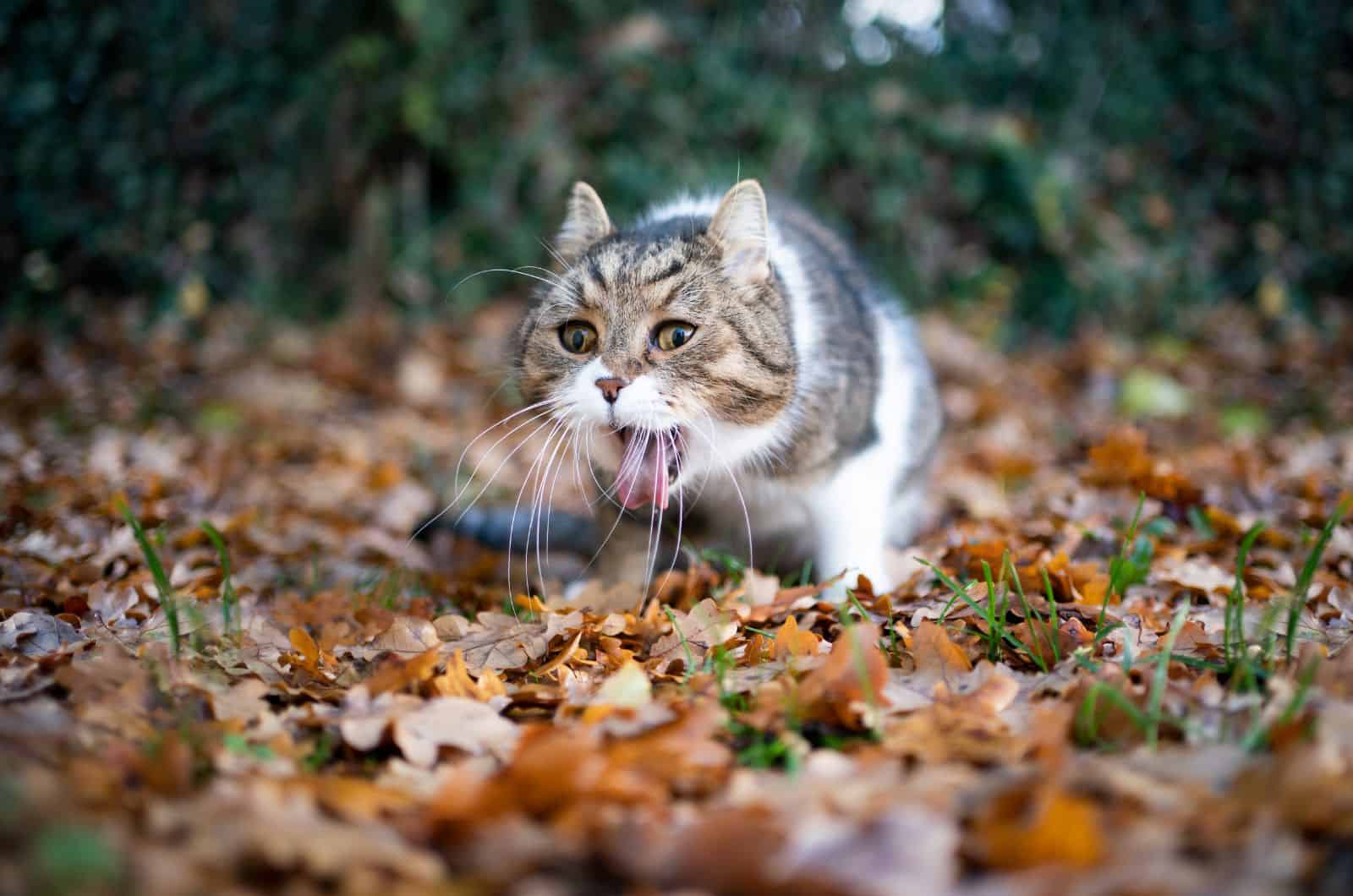
This article provides you with lots of possible reasons for the main question – why does my cat keep throwing up but seems fine?
So, a cat doesn’t necessarily need to be seriously sick to throw up; vomiting may be a consequence of many other things and cats may still feel fine after it.
There are several possible reasons behind a cat throwing up and being otherwise fine. Reasons include overeating, eating too fast, poor diet, undigested food, new food, worms, pancreatitis, toxic ingredients, consuming human food, ingesting foreign objects, and food allergies.
However, besides these less serious reasons, vomiting can also be a symptom of more serious health problems that require immediate vet care.
These problems include hyperthyroidism, inflammatory bowel disease, liver disease, kidney disease, and gastrointestinal issues.
It’s so important to know when you should take your feline friend to the vet, as well as having a good understanding of what you can do in order to prevent cats from throwing up, and keep them in the best condition.
Related Content
• My Cat Keeps Sneezing But Seems Fine – What Should I Do?

